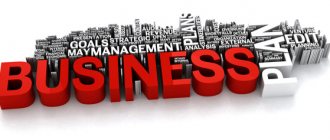negotiations increase sales
31.03.2020
Author: Academy-of-capital.ru
Add a comment
Rating:
| (Votes: 12, Rating: 4.92) |
From this material you will learn:
- Why is a personal meeting with a client necessary?
- How to arrange a personal meeting with a client by phone
- Possible difficulties when trying to make an appointment with a client
- How to correctly write a letter inviting a client to meet
- How to prepare for your first meeting with a client
- How to dress for a business meeting with a client
- What to take with you to a meeting with a client
- 7 main stages of meeting with a client
- What mistakes are most often made during a meeting with a potential client?
- How to draw up minutes of a meeting with a client
- How to properly conclude a meeting with a client and write a report on it
Some entrepreneurs believe that a personal meeting with a client is basically useless. Why waste time if you can negotiate with a potential buyer by phone or using online messengers? After all, time, as you know, is money. However, experts say that it is personal meetings with clients that bring the greatest benefits to businesses.
True, in most cases it will not be possible to simply come and conclude a deal right away. It is necessary to carefully prepare for such events. You should collect information about a possible buyer, organize a meeting correctly, choose a certain style of behavior - and so on and so forth. Only if you correctly take into account all possible nuances can you hope for success.
Why is a personal meeting with a client necessary?
Let's figure out why to get a good income you can't do without individual meetings with a potential buyer. Agree, it’s much easier to use the phone or the Internet to call a client or send a promotional letter. Then calmly wait for response actions, which, by the way, may not happen! Everyone knows that mailings often end up in the Spam folder, and many recipients simply ignore them.
Therefore, any types of remote communication with consumers do not actually speed up sales processes. Moreover, during correspondence there is always a chance of missing important information. Why does meeting with the client play a big role in direct selling? At a distance, the seller does not feel the mood of the interlocutor, and the latter does not trust the seller. Without a personal approach to a person, it is impossible to show how important he is to the company. If the newlyweds personally invite you to their wedding, you must admit that this is more pleasant than a postcard in the mailbox.
Of course, with a full-time job, not everyone wants to spend time on visits. But in a personal conversation, the influence on a person is difficult to overestimate. Everything is important here - your confidence, appearance, open eyes, smile, warm handshake and product samples. The customer has a chance to see and touch your product. All this cannot be experienced at a distance - over the phone or by e-mail.
In a one-on-one presentation, the person will not reject the call and hang up. Of course, nothing will prevent him from leaving, but this will be a last resort. After all, he spent time and came to your meeting.
A meeting with a client in sales allows the seller to find out the person’s needs and problems, feel the reaction to the offer, see facial expressions and gestures in order to adapt to this psychotype. If in a telephone conversation a potential buyer did not show increased interest in your product, then in a live conversation there is a chance to persuade him to buy.
We recommend
“Preparation for negotiations: main stages and main mistakes” Read more
When the product is expensive, a personal meeting is indispensable. It is unlikely that anyone will agree to pay such a sum after a telephone call or communication on the Internet. And the client himself will appreciate the time you spent on him. He also made an effort and came to the presentation, which means he understands the importance of the deal and contributes to the further purchase. All this will lead to the desired sale.
But here's what's important. A face-to-face personal meeting tacitly imposes obligations on both sides of the conversation. It proves that the company values the customer, and you treat the business with full responsibility and value your clientele.
Rules for meeting with the buyer
Psychologists are confident that most of the incoming information is received unconsciously. It follows that the buyer can make the final purchase decision based on unpleasant sensations. And a well-developed plan for dialogue with the buyer does not always work well.
To make meetings more effective, there are certain rules:
- Don't linger. The client should not have to pay for the wait, there can be no excuses.
- Be polite and tactful.
- Eliminate unnecessary ones. There should be no strangers at your meeting; the client should be influenced only by persuasive skills.
- The buyer is free in his choice. If you fail to make a deal, you need to take it calmly. Do not cross the boundaries of professional ethics. It may be that you are to blame, so you can clarify where exactly the buyer disagrees.
- Preparing for a meeting with a potential client. Managers must understand the questions that may arise during the course of their work and be able to answer clearly. You should not use too many template phrases; many clients prefer freer communication.
How to arrange a personal meeting with a client by phone
Those who have worked in direct sales for a long time know how difficult it is for a manager to meet a client for the first time. The psychology of the interlocutor is such that the majority of subscribers do not want to listen to what is being sold to them over the phone, and refuse even lucrative offers. How to make an appointment with a buyer? Here are step-by-step instructions to help you get started.
By following these rules, you can easily reach an agreement with any client.
- Before you make a call, sit down and relax in your office chair. Be patient, be friendly and smile. Many people feel a smile even on the phone. So, get positive and start acting confidently.
- Dial the number and introduce yourself as a company representative. State your position, first and last name. Briefly describe your line of work.
- State the purpose of the call so that the interlocutor understands what you are talking about. You should not reveal all your trump cards at the beginning of the conversation. Try to arouse the client’s interest, and promise to tell all the details during an individual meeting.
- Mention large companies that are your partners. Often the trust of well-known companies works in favor of the seller.
- Determine the day and start of the meeting with the client yourself. He must be sure that he himself has set the date and time. But you know that it was a choice without options.
- Politely say goodbye and express gratitude to the interlocutor for his attention to you.
Stage of organizing activities
In order to start planning something, you need to schedule a meeting with the client; you can find out about a convenient time and place by phone. In this case, the day of the meeting must be set by the one who proposes to meet. If the buyer responded positively to your offer, then it’s time to get ready. You need to think carefully about what you will use:
- Notepad or notebook
- Business cards with a uniform design
- Agreement forms. They will be useful if the buyer is going to conclude an agreement at this meeting
- Advertising displays and brochures. This will reflect what you do and see differences from your competitors.
When preparing for a meeting with a client, you need to pay attention to how you are dressed. When drawing up a plan of topics to discuss with the buyer, you need to:
- Find a suitable suit. Jacket, shirt. You can wear a turtleneck. For women, you can choose a formal suit. It's better not to wear something provocative.
- Make sure your manicure and hair are well-groomed.
- It's better not to wear fakes. If you cannot afford branded items, it is better not to use fakes in your image.
When a client sees a person, he makes his first impression. Remember that posture and gestures complement the overall impression of you.
Possible difficulties when trying to make an appointment with a client
Every working person in his professional activity is faced with overcoming certain problems. In particular, sales agents and sales managers must understand the client's mood in order to close all objections. Here are the main situations that cause difficulties for the seller:
- A company employee or secretary replies that the person you need is currently absent. Perhaps this is not pronounced very respectfully. You should ask when is the best time to call back.
- The person on the other end of the line asks what question the seller has . You need to answer evasively, while making the interlocutor understand that your call was important and should not be forgotten. Something like this: “I’m regarding the data that Ivan Ivanovich left for me.”
- The client refuses the meeting and offers to give him the catalog by fax or email . The sales agent agrees, but explains that the calculations are very complex and if something is missed, the picture will not be entirely clear. “It’s more profitable for you to give me five minutes for a personal meeting than to spend a long time figuring out what’s what.”
- The interlocutor refers to being busy and does not want to continue the conversation . In this case, the manager can respond: “I understand and am ready to call you back when you say so.” At the specified time, he calls again to propose a meeting to the client.
- The buyer is interested in the cost of the product . The seller says that the company’s assortment is wide and prices are formed taking into account the selected items. All this is discussed in a personal meeting.
- The client replies that he is satisfied with his suppliers and does not plan to change them . The caller offers to convince the interlocutor of the opposite in five minutes and prove that his company’s offer is much more profitable than the conditions of the old partners.
- The subscriber irritably interrupts the manager with the phrase : “We are not interested in your offer.” He does not try to continue the dialogue and asks if he can call back later, in 2-3 weeks.
Communication strategy
- Internet promotion, translation of materials,
- Preparation of the company, promotion in foreign markets,
- Organization of meetings, support of business missions,
- Individual business negotiations with partners,
- Matchmaking and presentations within the business forum
- Consulting support NIE Souzconsalt
Any sales system, “Sales Funnel,” involves meetings and getting to know a potential customer. Matchmaking is a convenient form of meeting and communicating with a client, short presentations of opportunities and needs, preparation for contractual work.
How to correctly write a letter inviting a client to meet
There are rules of official correspondence that must be followed. Otherwise, you risk being misunderstood. If the text of the letter is written in violation of business etiquette, it may be considered an insult. The more perfect your proposal for negotiations, the more likely it is that there will be a personal meeting.
The message must be composed correctly and absolutely competently, using an official business style of speech. It should be friendly and respectful, regardless of your emotions and real attitude towards the recipient. The main idea of the letter is readiness to respect common interests, as well as mutually beneficial partnership. And, of course, a meeting with the client.
The text should be concise and written in short sentences that specifically express the main idea. The presentation format involves a visual breakdown into logical parts. It is necessary to use in the message only combinations of words and syntactic means familiar to the addressee. You should not write hints or phrases with hidden meaning.
Today, most negotiations (and especially international ones) are conducted electronically via the Internet. But all these useful tips apply to them too.
Having an idea of the basic principle of writing official letters, you can use templates to compose any text yourself. There would be a goal.
If your task is to meet clients in the office, the structure of your message will be like this:
- Information about the enterprise
This data can be reflected in the header of the form or presented as a separate text. Their purpose is to give the addressee the opportunity to provide feedback to the sender. In emails, it is enough to indicate contact numbers at the bottom of the message.We recommend
“Customer Relations: 10 Main Principles for Building Long-Term Relationships” Read more
- Requisites
The outgoing document number is very important; it is subsequently entered into the incoming correspondence registration book. In some cases, such a record can prove the fact of correspondence between two companies.At the top of the letter (or at the bottom) is the date when the manager signed the message. Without this signature, your text will not be authentic.
- Addressee information
Information about the recipient of the item is in the upper right corner. To prevent your business letter from accidentally reaching another person, you need to indicate everything that is known about him (even if this information is very little): full name, phone number, e-mail (mailbox) or website URL. Ideally, there should be the address of the company's location and other data. - Appeal
From the first lines of your message, the client should feel a courteous tone. You can add the adjective “respected” to the recipient’s first name. If you are sending a letter setting up a meeting with a client to the organization at his place of work, you should indicate the position occupied by this specialist. - Introduction
According to the rules of business communication, the sender of the letter must introduce himself to the person he is inviting to negotiations. If you need to write a response to a message sent, the recipient needs to know who and how he should contact. This principle is relevant in situations where the parties to the dialogue are strangers and have not previously communicated through correspondence. - Cause
All written messages to partners must be targeted. The letter that initiates negotiations, as a rule, contains an indication of the reasons that became the beginning of a future dialogue between the two parties. There is one caveat here. First of all, think about how to formulate your reason, which should be serious and quite convincing. - Meeting information
How to make an appointment with a client? In order for an invitation letter to motivate a person to take any action (in this case, a face-to-face conversation), the manager must indicate the time and place of the negotiations. However, choosing a date requires a tactful approach. What options does the letter writer have?It can do the following:
— Specify the exact day and time.
— Select a date with the possibility of adjustment at the request of the client or mutual agreement of the parties.
— Set a day and set a time frame for the meeting (let’s say 10.00–00) taking into account the addressee’s busy schedule. Or set a wider interval of several days (from 11:00 Tuesday to 17:00 Wednesday). In any case, it is better to indicate the dates.
— Leave the choice of time for the conversation to the discretion of the addressee.
The last method is considered the most delicate, but not entirely reliable. Since business correspondence is designed to motivate the partner invited to the meeting, here he himself will be the initiator of setting the date.
- Additions to the message that sets up a meeting with the client
What else may official letters contain in certain cases:— Words of gratitude for the opportunity to send an invitation to the recipient.
— List of those who will take part in the negotiations.
— The procedure for the invitee if he fails to appear at the appointed time. For example, write a response letter, give your suggestions, etc.
— Contacts of a person with whom you can contact and clarify the details of the upcoming meeting (if this information is not indicated at the beginning).
As you can see, business letters inviting a client to a conversation can be written in various forms. But they all must satisfy the general requirements of official correspondence.
.
How to prepare for your first meeting with a client
If you want to successfully conduct your opening negotiations, you need to seriously prepare and take into account possible nuances. Don't rely on your resourcefulness to help you out on the spot. Be prepared no matter what the conversation takes. To do this, you will need a meeting plan with the client, which will include several scenarios of what is happening. Divide your preparation into two parts – information gathering and organizational aspects.
1. Determining the purpose of the meeting with the client
Do not delude yourself that an agreement will be reached the first time. This doesn't happen. If the outcome is favorable, meeting your partner will allow you to begin a successful interaction, meet again and collaborate for the benefit of both parties.
What goals does a manager pursue at the first meeting with a future client:
- see the prospects and his desire for business partnership;
- find out the main needs of the buyer;
- find out which company’s products will be useful to him and will meet his needs;
- offer samples, catalogs and tests;
- obtain feedback (response) from the interlocutor.
At this step, the manager does not sell the product, he presents himself (makes a pleasant impression, arouses interest in the company, establishes trusting relationships). For everything to go well, you need to first think through all possible conversation scenarios and be fully equipped to cope with the situation that arises. You should not rely on chance and personal resourcefulness.
2. Collection of information about the client
Before you create a script for a meeting with a client (or plan), you need to find out as much as possible about the buyer. How to do it:
- Find information about your potential partner's occupation. Read specialized journalism to remember characteristic definitions that will be useful to you in conversation.
- Review the client's company website, familiarize yourself with its structure and the most important information. Read who runs the organization and draw your own conclusions.
- Study competitors' products to offer a possible client the best deal terms.
But the main thing is to know your company’s product very well. The manager must be aware of all the nuances of what he advises the client. If a sales representative is unable to properly present the product, it is unlikely that anyone will contact him in the future.
3. Arranging a meeting with the client
This stage should be devoted to organizing negotiations, which should first be scheduled. Contact the buyer to confirm the time and place of the expected conversation. Having agreed on a meeting, specify its date, taking into account the client’s opinion.
Where negotiations can be held - a few examples:
- At the client's office or other location of his choice. Of course, you can prepare for such a conversation, but often you need to react according to the situation.
- On your premises (in your own office, meeting room, etc.). Don't receive a visitor in crowded places where both of you will be distracted. And never start a conversation while walking or in the aisles.
- In the neutral zone. To do this, you can rent a conference room or go to a quiet cafe. You shouldn’t invite a client to a restaurant, it won’t be very comfortable there. You will both have to pause to eat. Remember: meeting a client and eating are incompatible.
It is better if the room chosen for negotiations is quiet and uncrowded.
Step-by-step instructions or meeting script
You, as a person who wants to get a new client, need to understand that preparation alone is not enough for successful negotiations. You should be familiar with meeting protocol and basic business etiquette.
We have compiled an action algorithm for you, thanks to which the first meeting with a client will be at the highest level, and you, as a specialist, will be left with the best impressions.
- Enter the office. If you are meeting with a client in his office, and your arrival has been reported, enter the office by knocking. You do not need to ask permission to log in again.
- If the meeting takes place on neutral territory, then you need to arrive 5-10 minutes before the appointed time.
- Greet the client. Say hello using your first and last name.
- At the client's premises, the client should be the first to extend his hand to greet. If he did not do this, then the handshake does not occur.
- In your territory, you are obligated to extend your hand first.
- In a coffee shop, men extend their hands to women, older ones to younger ones.
- Exchange business cards. The business card must be handed over in person. If a client offers you his business card, you should definitely read it out loud. You can't put it in your pocket without looking and familiarizing yourself with it.
- Sit down on a chair. If the negotiations are taking place in the client’s office, then wait until you are asked to sit down. If you don’t receive an offer, ask where you can sit. If the meeting is taking place on neutral territory, then there is no need to wait for an invitation to take a chair.
- You start a conversation. It is necessary to start negotiations with abstract topics. It's best if you give a compliment to the client's company. Only he must be sincere. Do not touch on topics related to religion, politics, or sports interests. It is also better to refrain from banal topics about the weather and the beautiful interior of the office.
- After talking on general topics, move on to asking situational questions. Start asking them carefully, “testing the waters.”
- Then move on to more serious problematic issues and suggest ways to solve the identified problems. Make a short forecast for future cooperation.
- If the client expresses a desire, you can sign a cooperation agreement. But don't insist on it. Very often a person needs to “digest” the information received.
- It is better to end the meeting with an agreement on the date and time of the next meeting. Even if it turns out that the client is not interested, still ask him to meet with you again.
- Say goodbye to your interlocutor, thank you for their time, and leave the room.
- After the negotiations, write down the most important points and details of the meeting in your diary.
How to dress for a business meeting with a client
According to the Russian proverb, everyone is greeted by their clothes, and the appearance of the seller is very important for a future partner. In preparation for negotiations, you need to do the following:
- Remove a business suit from your wardrobe. It can be worn with a shirt or turtleneck. And don't forget the tie. For women, the standard option is a blouse with a skirt or trousers with a jacket. In any case, clothes should be comfortable.
- You should not choose an over-the-top, creative or bold toilet.
- Carefully style your hair and do a manicure. Women's makeup should be neutral and not distract the client.
- Clean your shoes and put them in order.
- Avoid cheap jewelry and accessories, counterfeits of famous brands. Usually wealthy people know very well how Chinese watches and other accessories differ from real ones. If you don't have money for original wardrobe items, don't wear fakes at all.
Ability to organize dialogue
The ability to organize a dialogue at a business meeting or a meeting with the participation of a mediator is an exceptional talent for a leader. This is a very important condition for success in holding a business meeting.
The manager must choose a meeting format from the following options: with a mediator, with a leader and a mediator. The chosen format of the meeting will allow it to develop according to a certain scenario and determines the model of everyone’s participation in it.
What to take with you to a meeting with a client
Now think about the promotional materials and devices you will need for negotiations. What else should be in your case or bag:
- A diary (organizer) where you will write all important notes.
- Pen.
- Personal business cards, which should be succinct and concise.
- Sheets of paper (useful if you meet in a coffee shop and the interlocutor did not take a notepad with him).
- Forms for contracts, orders and questionnaires (required to conclude a deal if you presented your product correctly).
- Advertising brochures and catalogs to clearly show the client what you are talking about and offering to purchase.
Client needs
After contact with the buyer is established, the seller begins to analyze the consumer. He asks the customer something that will help the employee learn about the customer's intentions and preferences. This knowledge will help you propose a suitable product. After this, it is already possible to formulate an approximate goal of collaboration.
Specific questions help not only to find out about a person’s interests, but also to simply start a dialogue. If the client did not believe in the possibility of good cooperation with you from the very beginning, a properly conducted conversation can interest the client.
A good conversation will result; during the dialogue, the client himself will understand that only you are able to cope with his problem. If this stage is passed, then you can proceed to another stage of the discussion.
There is a simple sequence of steps in preparing for a meeting with a client, on the basis of which you can build a dialogue.
First you need to contact the buyer as he introduced himself and discuss the goal. Next, it is important to introduce yourself, the company and the product being manufactured. After this, after listening to the client and responding to his complaints, you need to clarify the details. Throughout the entire dialogue, you need to create a pleasant atmosphere and prevent the emergence of unpleasant feelings and tightness. Listen well to your interlocutor and understand what he is saying. This may help in future collaborations.
TRAINING PROGRAM FOR CONDUCTING MEETINGS WITH CLIENTS
What mistakes are most often made during a meeting with a potential client?
All sales agents who conduct face-to-face negotiations with buyers make mistakes from time to time. Even the most experienced seller is not immune from them. Here are the most common mistakes:
- Present a product or service ahead of time, bypassing the stage of establishing contact and identifying client needs . At the same time, the person understands that they are trying to sell him a useless thing and experiences irritation.
- Do not prepare a plan for the conversation, hoping to get your bearings on the spot . If the manager did not want to draw up a script for the meeting with the client, the dialogue will not be constructive, with long pauses to think about the issues. As a result, the conversation will drag on for a long time.
- Not seeing the main need of the interlocutor and discussing secondary needs that flashed in the conversation. Such conversations are like playing broken telephone.
- Do not listen to the speaker and ignore his position . Such people are perceived as selfish and putting pressure on the client in order to gain personal gain. Typically, the buyer avoids long-term communication with such partners.
- Not concluding negotiations properly . Many managers say goodbye after the conversation and that’s it. They are confident that the job is done and the next step is to send the client a USP for their product. In reality, in order to achieve results, you need to discuss and control all further actions - meetings, calls and conclusion of contracts.
- Show dissatisfaction with your partner about the refusal, being late, the fact that the meeting with the client has been postponed, etc. People are reluctant to maintain business relationships with “accusers” and those who rush them at the first meeting.
- Call often to confirm negotiations (so as not to leave in vain) , intrusively remind you about the meeting, etc.
- It is reckless to offer preferential terms of the transaction (discounts, bonuses, etc.) to your interlocutor who is ready to buy . Often, inexperienced sellers overestimate their capabilities and promise mountains of gold if only the sale takes place, thereby violating the company’s pricing strategy.
Conducting business meetings, receptions, negotiations
Typically, in the practice of business events, several basic methods are used:
- balancing;
- compromise (participants must make mutual concessions; if there are contradictions, agreement must be reached step by step);
- integration (implies convincing partners of the need to approach solving the meeting problem taking into account existing relationships and conditions for the further development of cooperation);
- variational (used in complex negotiations).
Moreover, each method involves the use of a number of techniques and principles that specify actions at each stage:
- meeting the participants and establishing contact between them;
- attracting attention (actually starting negotiations);
- information exchange;
- argumentation of proposals;
- solving the problem.
If the business meeting has achieved its stated goal, the final stage requires a mandatory summation of the results and a brief repetition of the main points raised during the negotiations. It is imperative to focus on the successful, effective aspects of the event.
How to draw up minutes of a meeting with a client
To increase the efficiency of business processes in the field of sales, a special document is used, which is filled out by managers after a meeting with the client. This is not a contract, but an auxiliary form that allows you to optimize the wording of important agreements. It plays the role of a bridge for mutual understanding between the two parties to the negotiations. Practice has shown that a protocol of conversation with each partner can improve the manager’s effectiveness.
Let's look at how to compose this document. At the top of the sheet is the name of the form, below it is the time and place. All these records must be very accurate.
In addition, the signature date is indicated at the top of the protocol. It’s good if she is alone, since there are cases when a document is endorsed after consultations and approvals with the management of enterprises. As a result, the last date differs from the original one.
Following the introductory information, the companies and all participants in the negotiations are listed. Here it is necessary to indicate their position and the place where all these representatives work.
If a meeting with a client requires the presence of a third-party expert (consultant, translator or technical specialist), his participation is reflected in the form of a footnote (note) at the end of the protocol.
After the list of invitees, they briefly summarize all the important points that were discussed at the meeting. The negotiating parties must approve the information. For this purpose, it is necessary to take into account the financial potential and other capabilities of the event participants. Ideally, you need to agree on long-term cooperation, which is beneficial to both the seller and the buyer.
For convenience, all topics in the protocol are presented in a separate paragraph. To the right of each, decisions made and responsible executors are indicated.
You should also distribute responsibilities between the meeting participants (chairman, secretary, meeting participant, rapporteur, etc.) in order to structure the negotiations and work fruitfully. The function of the elected secretary is to record the fundamentally important points of the meeting.
How else can you draw up a protocol when a meeting is held with a client? There are several such formats, but three main ones can be distinguished:
- A table that contains numerous rows and columns.
- A short resume for each participant (except the host).
- Free presentation without highlighting the columns, but with a signature and date.
.
Note! As mentioned above, the negotiation protocol does not serve as a contract for the supply of goods or other agreement. Its only purpose (if the document is drawn up correctly) is to structure further negotiations and consultations according to the assigned dates.
Immediately after the meeting with the client, you should submit a ready-made protocol listing the agreements reached for approval. The faster this is done, the more profitable it will be for the parties to the negotiations. Some organizations even maintain visual documentation of the event process. The reached agreement on the interests of the parties is immediately marked with a marker on a special board or acted upon in another way. Later, the signed protocol is transferred to the negotiating parties.











